I wrote the book on the Mazda MX-5. Well, I wrote a book on the Mazda MX-5. There are loads of them and most probably say much the same thing – that’s kind of the risk of writing about something that everyone’s already familiar with. Since 1989 Mazda has sold more than a million MX-5s. That’s a lot of cars. So there are a lot of books.
Are there books on the MGF? I imagine there must be. For a good spell of its existence it outsold the MX-5, in the UK at least. MG’s first all-new sports car of the 1990s (I assume we’re not calling the RV8 “all-new”, right?) was by latter-day Rover Group standards a bit of a hit, tapping right into the heart of the roadster boom created by the MX-5 at the dawn of the decade.

Design proposals came out of Rover itself but also companies like IAD (who’d been involved with the MX-5), but it was the local option, conceived by the then-spectacularly coiffured Gerry McGovern (now design overlord at JLR) and Gordon Sked which won out.
Mechanically it was surprisingly ambitious for its day, MG opting for a mid-engined layout rather than the traditional front-engined, rear-drive favoured by Mazda. The choice was made easier by effectively utilising the K-series-carrying subframe from a Rover Metro, spun through 180 degrees. Steering was electrically assisted – a technology in its relative infancy at the time.
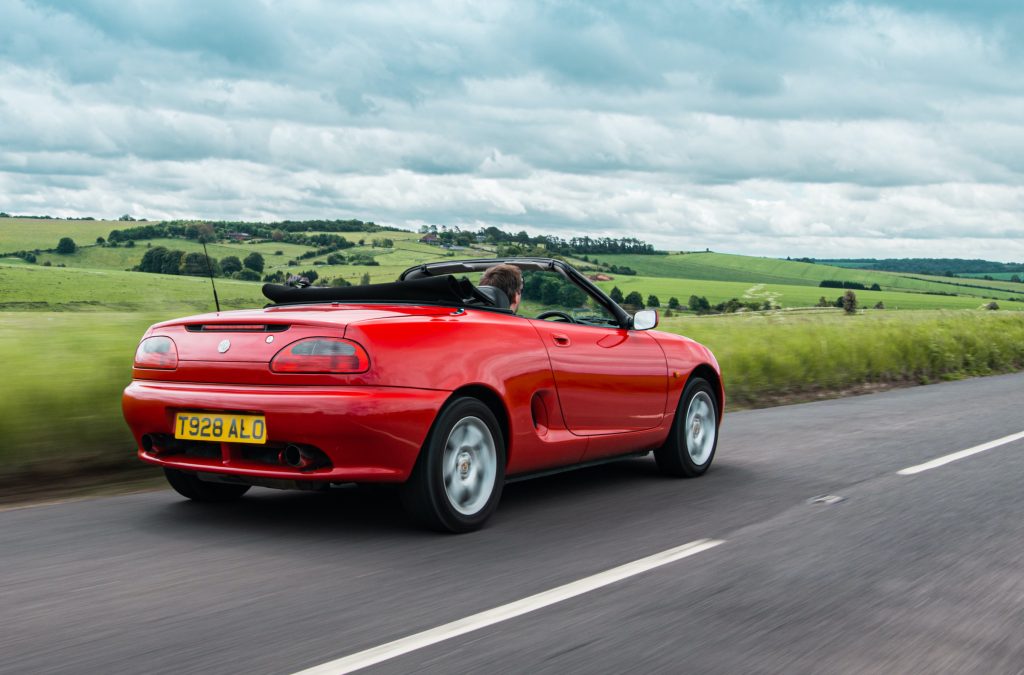
Off the rear subframe, and indeed a similar subframe at the front, Rover hung double wishbones, but the springing medium was the Hydragas suspension design (also nicked from the Metro), with its interconnected, fluid and gas-filled spheres, assisted by conventional dampers. For those unaware, Hydragas is not unlike a simpler take on Citroen’s hydropneumatic design, the main difference is that they’re always pressurised, and don’t require an accumulator. Not quite as clever or versatile, but simpler and cheaper.
An odd choice for a sports car too, which is perhaps why when the MGF was replaced by the MG TF in 2000 – arriving alongside the Peter Stevens-penned and brightly-coloured MG ZR, ZS and ZT – it got a more conventional setup of coil springs and dampers. You can think of the TF as being the “second generation” F, with a final fling between 2007 and 2011, under Chinese ownership, the third.
Reviews were generally positive. Jeremy Clarkson, of all people, called it “one of the best thrills around” writing for Top Gear Magazine in October 1995, despite reservations over the gearing and driving position. Colleague Tiff Needell was less keen, calling it “dull”, but that same month in Car Gavin Green gave it the nod over the then-ageing first-gen MX-5, the Fiat Barchetta, and the front-drive Alfa Romeo Spider.
Autocar? A solid four out of five, praising “the best MG since the Second World War” and falling for its looks and secure handling, if not its cabin and fun factor – though by 1998, with a new MX-5 around and despite the arrival of the more powerful VVC, the magazine’s review score dropped to a middling three stars. “Lacks the delicacy and intimacy of a true sports car,” read that year’s Road Test Year Book.
Familiar, yet different
The car we’ve got today, and the first time I’ve so much as sat in MG’s once-radical sports car, is a 1998 model on Hydragas, and representative of the kind you’ll find on the used market for a couple of grand. It’s owned by serial MGF and Mini buyer and Hagerty UK Events Manager, Adam Sloman, but was more of an opportunistic buy than the result of a long search, so it’s what you might call straight, but not perfect.
What stands out immediately is how much tidier it is than any MX-5 you could get for similar cash these days. Perhaps it’s the non-image of the MG brand among the kind of young buyers picking up old MX-5s. Or the gentler, older, less diverse scene, or maybe the MX-5 is just better ingrained in pop culture thanks to being a global phenomenon, but values of like-for-like examples aren’t even close.
MG offered a VVC variant – that’s Variable Valve Control in Rover-speak – which made 145bhp when new, a figure you’d need a post-2001 1.8-litre MX-5 to match, though this car is the regular 118bhp K-series, more on par with the contemporary 1.6-litre MX-5. But call it four grand to get a Mazda that doesn’t need a patchwork of new metal underneath to keep the thing together, or twice that of an MGF. The Brit’s a ruddy bargain.
The tradeoff is each car’s perceived reliability. I can already hear the furious keyboard-bashing of K-series acolytes before I even mention the term “headgasket”, and specialists came up with fixes long ago now. But it’s not the hands-off experience you can expect from its Mazda rival and does not have that car’s reputation for unburstable longevity.
(As I type, my own Mazda – an RX-7 admittedly – has just spent a month having its engine rebuilt as a precautionary measure. I therefore stand in solidarity with K-series owners, those with early water-cooled 911s and Boxsters, and others whose cars most people are too afraid to touch. May our time bombs all tick in terrifying unison.)
Anyway, while this car is running as it should, the previous owner has nevertheless fitted a loud siren and bright red LED to warn of low coolant, since there’s no better cure than annoying and persistent nagging. Otherwise, everything is standard. Until you start it, when a Milltek silencer makes its presence known. But everything other than that. MX-5 fan duly baited.
On the road
The Rover Group did some fantastic colours back in the 90s, and while bright red wasn’t one of the more imaginative ones, it’s always suited the F’s shape and was found on most of the early press cars. It’s a good-looking car, don’t you think? That cornering shot above is probably its best angle – it’s a little too lozenge-like from the side and a bit tall at the rear, but the friendly face taps into that bright and optimistic 1990s energy, and the black windscreen surround keeps the visual mass nice and low.
Early observations include doors that shut with a clang rather than a thunk but an otherwise solid feel to the cabin, and a teetering seating position on the otherwise comfy chairs. The hood, meanwhile, is a bit fiddly. Ours protests at folding down as far as it should and flaps about a bit in the mirror, but it was a nice day, so I quickly forgave and forgot. In return, my forehead ended up the same colour as the MG’s paintwork.
There are several things the F does well. Better than an MX-5 in fact, and probably better than other rivals from its production run, such as the BMW Z3, Fiat Barchetta or Toyota MR2.
The easiest one to identify is ride quality. The Hydragas setup really works, soaking up ripples and lumps like a much larger vehicle, if not enough to stave off scuttle shake. It’s not as luxuriously wafty as one of Rover’s contemporary saloons, but just like the similarly-suspended Metro showed up its Fiesta rival as being a bit lumpy, it’s definitely among the better of its peers and takes the sting out of most B-road cragginess.
The K-series is sharp. Sharp in throttle response, and sharp in engine note, enhanced by that Milltek, which gives it a rasp like a grid full of race-spec MGFs – hands up who used to follow the one-make championship? – but also pleasingly raw and old-school. I’d not rank the F’s engine as one of the all-time great four-cylinders, but it’s got pep and enthusiasm. Ironically though, given MG ownership is synonymous with a bit of weekend tinkering, there’s an almost total lack of mechanical accessibility because of that mid-engined layout.
It’s also a bit hobbled by yawning gear ratios that take much of the snap out of the unit’s delivery, but it’s far from a deal-breaker and does make things easier on the ear at cruising speeds. The shift itself is also good. Not legendarily snappy like that of an MX-5, but pretty slick for one connected by cables to the engine behind you. MG placed the pedals correctly too, so a good heel-and-toe blip is never far away from the well-weighted brake pedal.
And for all that, I still prefer the million-selling Mazda.
In broad, sweeping terms, the MGF feels a bit like a sports car-adjacent experience, something designed for people whose corner-carving days are behind them but still aren’t quite ready for the back-seat tartan rug. That admirable ride quality is emblematic of the whole car: it’s rather nice not to be shaken to bits, but of all types of vehicle, surely the one where you can compromise at least slightly on comfort is a two-seater roadster. Once you meet the functional needs of a car’s ride quality – i.e. not so stiff the tyres lose their hold on the surface – then you can concentrate on other qualities, such as precision, feedback and balance.

An MX-5 has these in abundance and it’s hardly stiff as a board itself, but for my tastes the MGF trades a little too much interaction for its easy-going gait. For an owner trading up from a contemporary Rover 200 or similar back in 1995, it probably felt great. It’s just responsive enough and just balanced enough to feel suitably sporty, and of course you can drop the roof, which improves everything from a trip to the shops to a European tour.
And with fairly quick steering, modest dimensions and good grip, the MG can be a bit of a hoot in lower-speed, tighter corners. There’s a bit of roll but it’s not all at sea, and with a little weight transfer and a hefty prod of right foot you can even coax it into small, easily corrected slides. It doesn’t quite feel comfortable driven like this though, whereas its Japanese rival enthusiastically demands it, like a kid dragging you into a sweet shop by your jeans.
Lest you think I’m just being a yob, the kind of easy, on-its-toes, fingertip-pleasing feel you get from the Mazda is something the F’s own predecessors, the Spridget and MGB, always did so well. The qualities that define cars like this are never more vivid when you’re skidding about a bit at low, manageable speeds, balancing the controls and living out those Jim Clark fantasies, but they also percolate through the best cars from the moment you turn the first wheel, whether classic Lotus Elan or barmy new McLaren.
Still, coercing a bit of hard-won, low-speed silliness is better than driving this particular car at higher speeds. There’s a deeply disquieting float and wallow which to me feels like a complete absence of damping, but owner Sloman and indeed MG club forums suggest is a symptom of different tyre brands front and rear. Swapping my roadster enthusiast hat for an old-timey journalism one for a second, I’d question whether something as simple as mismatched (but entirely legal) tyres at each end should cause genuinely scary behaviour at as little as 50mph or so. People take road trips in cars like this, and should you pick up a puncture, there isn’t always the option of replacing a full, matching set.
MG Fabulous?
So it’s nearly there, the MGF, but between the soft suspension, the minimal feedback, and a chassis that’s at its best at a canter rather than a gallop, I’m not yet a convert. If its closest rival was designed to take away the hassle of those 1960s classics but kept the best bits, the MGF feels more like it wanted to capture their image rather than the experience.
There will be people reading this who disagree, or think I’m being unfair. There will be others who know MGFs inside out and are familiar with modifications that vastly improve the cars’ characteristics. There will be some who think my own beau, the MX-5, is just some characterless Japanese appliance, though given the Mazda is older, easier to work on and rawer than the MG, I’d be inclined to disagree.
What I’d say in return is that I still genuinely enjoyed my first MGF experience, and that there’s no disputing that they’re currently a bargain for those seeking roof-down, fair-weather enjoyment. Road testers have a habit of looking a bit gloomy in photographs (you’ll be pleased to know it means we’re paying attention to the road, and not the camera) but I promise I spent most of the day with a smile on my face.
That said, my opinion on the car probably wouldn’t change a great deal if I’d driven a perfect or even modified example of the car (though the later Trophy 160 model is intriguing). With a few exceptions, most of the Mazda MX-5s I’ve driven over the years have been low-budget, used-market cars in need of at least a little work, comparable to this car. They’ve all delivered a more involving, more focused sports car experience, whether at walking pace or on a track day.
Despite my misgivings, I’m glad to have given the MGF a chance, and now feel better qualified to appreciate its abilities as more than just a curious and semi-educated observer. But if you need someone to write a book on one, you might be better off asking elsewhere…
Thanks to Adam Sloman
Also read
The Mk3 Volkswagen Golf GTI is not as bad as we’re told
Retro Rewind: Mazda MX-5 1.8i vs MX-5 R-Sport
Buying Guide: MGB Roadster and GT (1962-1980)

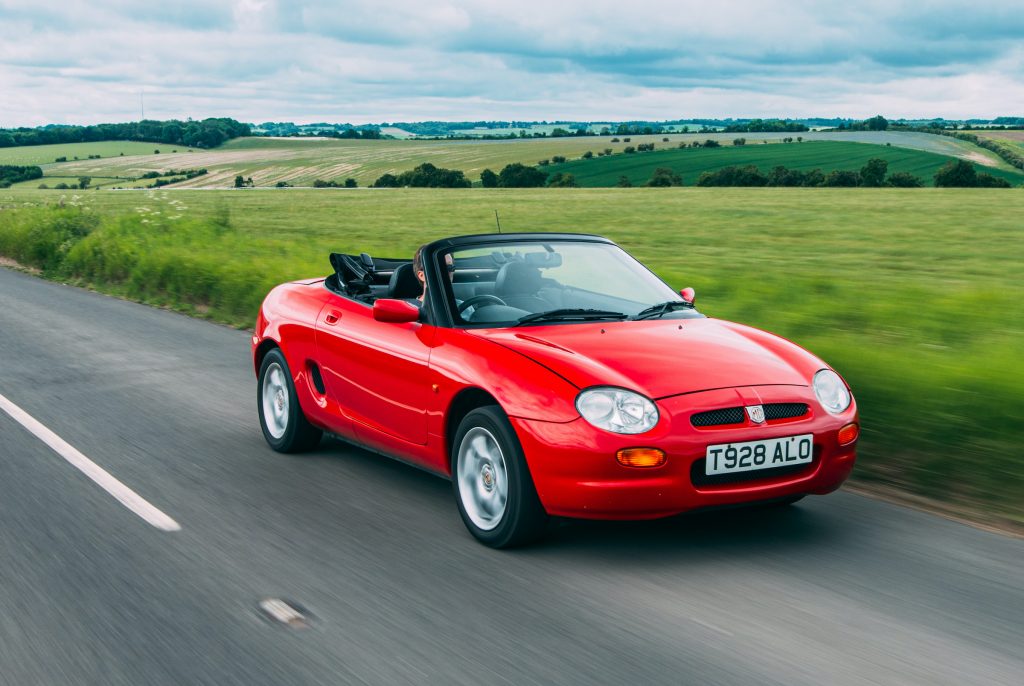
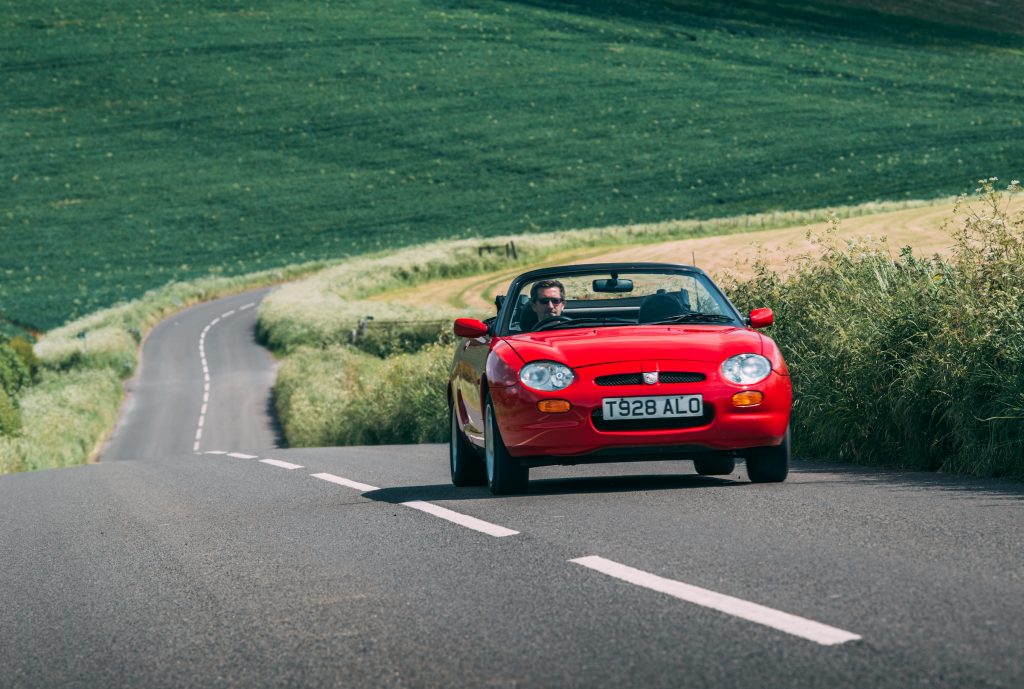

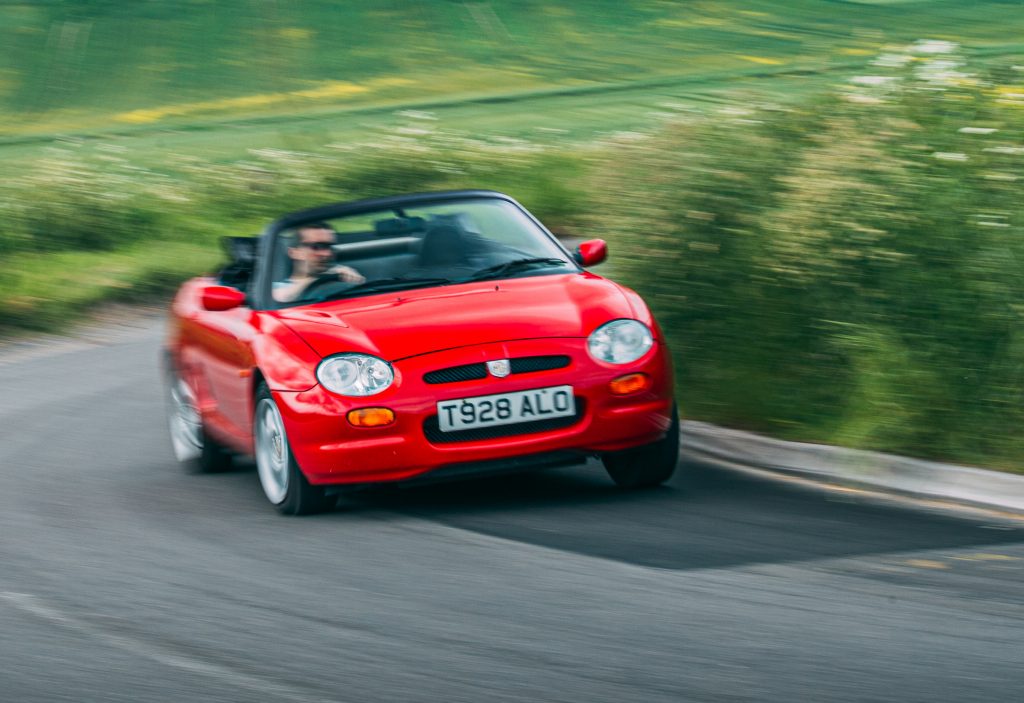
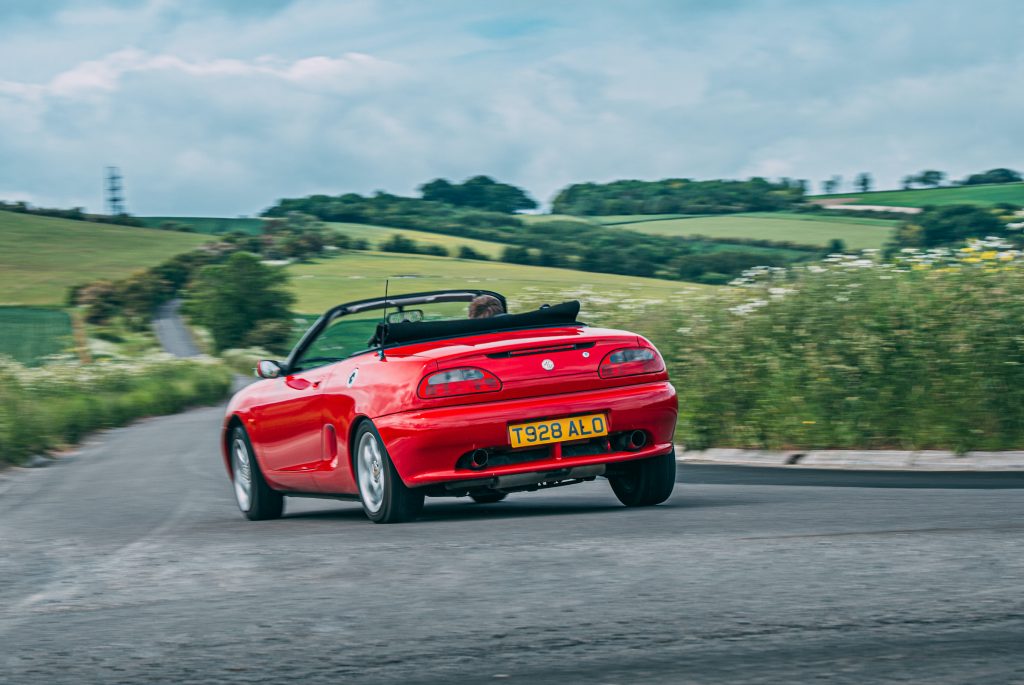
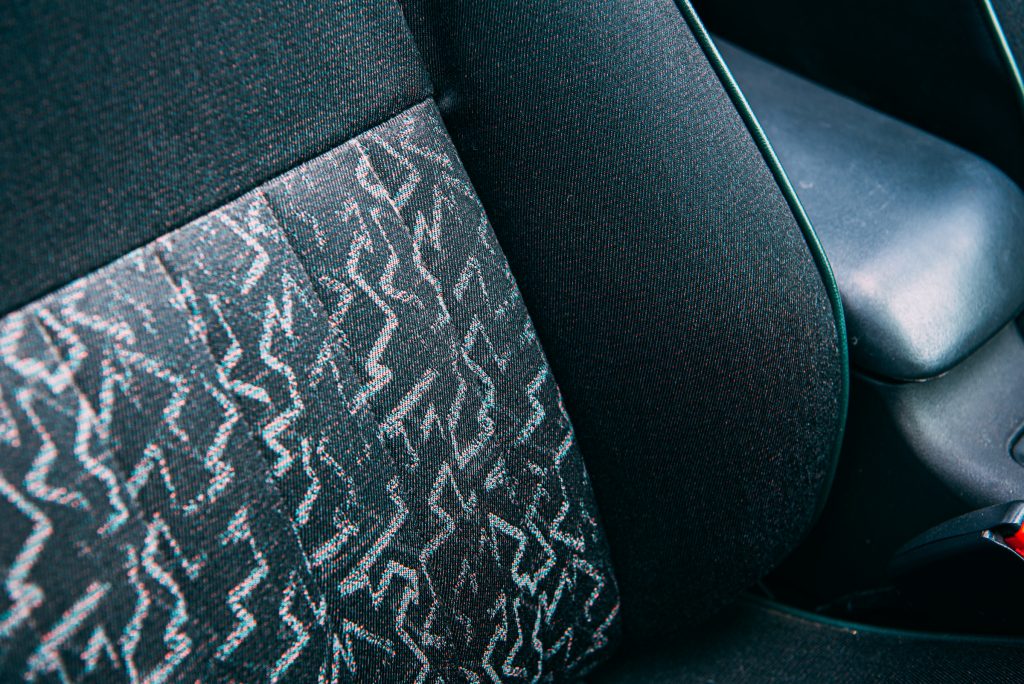
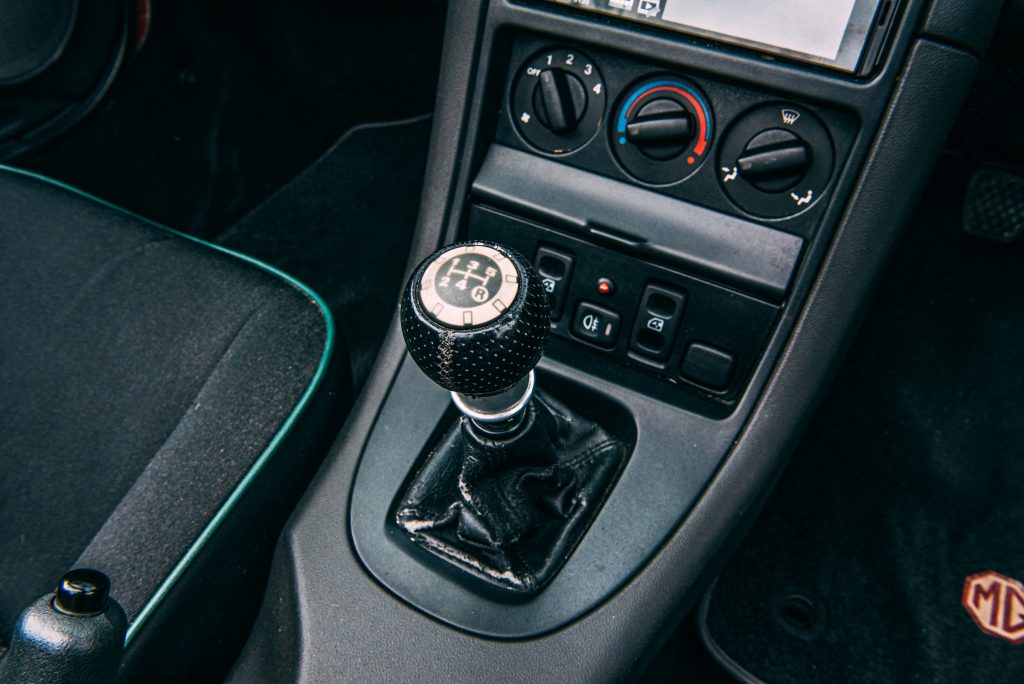
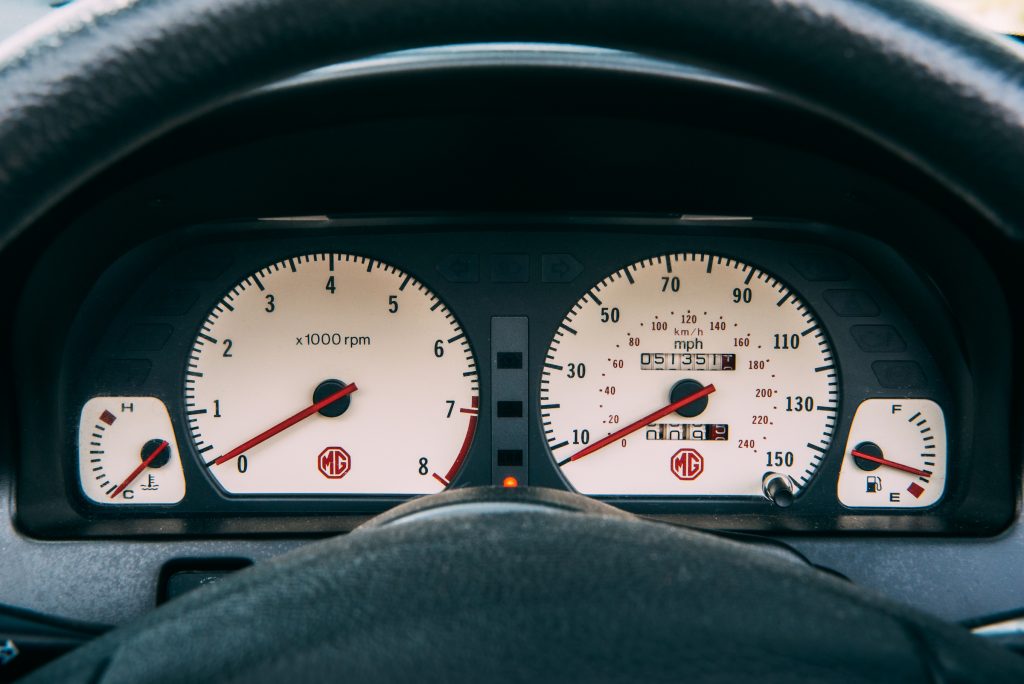


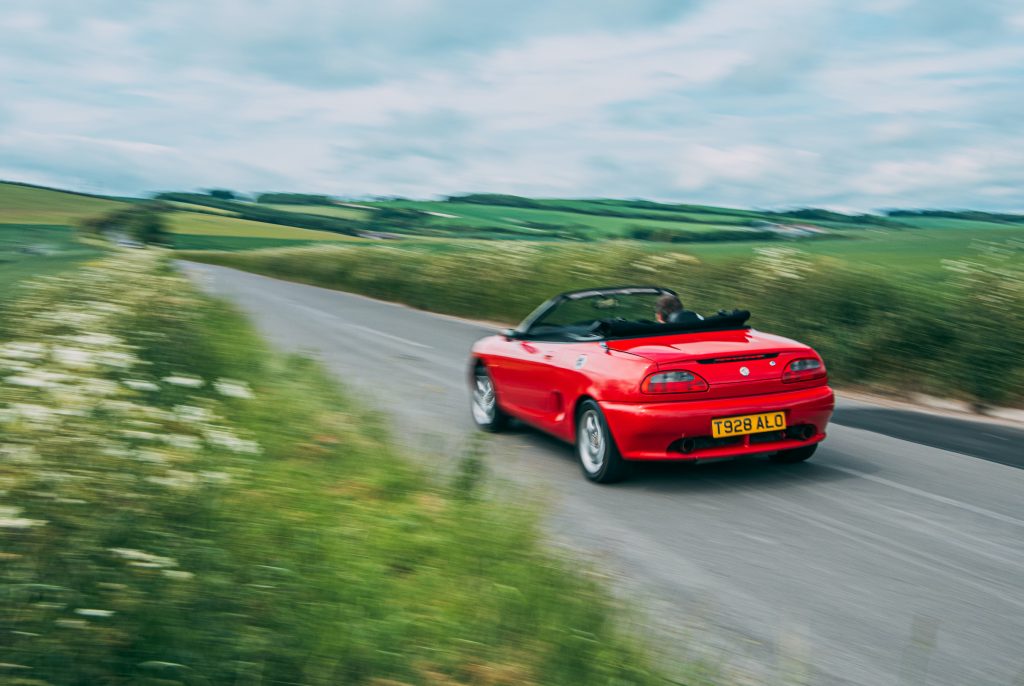

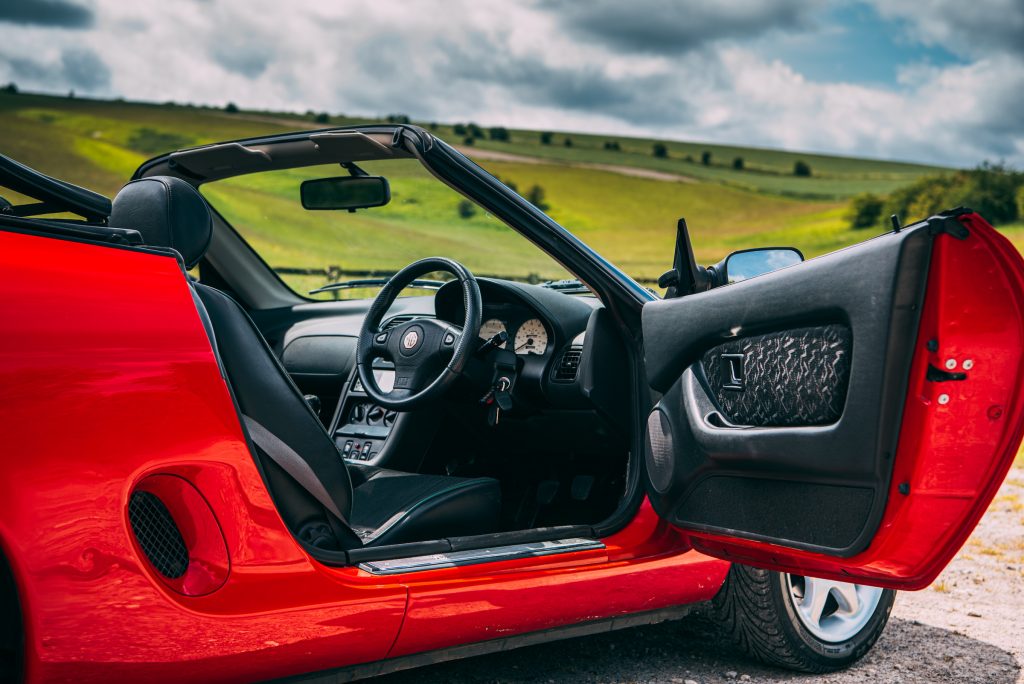









The tyre quandary is well known, if you’d done a little bit of homework. They had, and needed specific tyres to behave properly and many owners have struggled to find the original spec or a modern take on same. The MGOC could help you out here…..
Hello AG, thanks for the comment. Whether or not I’d known about the tyre issue beforehand is fairly immaterial if the car I have access to isn’t wearing what’s considered the “right” set – I can only report as I find.
What that doesn’t change is that of the many hundreds of cars I’ve driven over the years the MGF is the first to display seriously worrying handling characteristics at relatively modest speeds simply by having the incorrect (but entirely legal and good condition) tyres. While I genuinely liked the car, I’d consider that a design flaw.
I am, of course, perfectly happy to update my findings though should I get a chance to drive a car in pristine condition and on the correct rubber.
I seem to recall some of the floatiness has been also attributed to some unintended airflow over and under the front bonnet/boot
– and also suspension spheres that at what, 22 years old, are probably well past their best. Had an MX5 but for me it was just too much sportscar, hard riding, uncomfortable, and despite Bilstein suspension, new tyres and a limited slip diff, strangely numb and uncommunicative handling. Perhaps I’m just now at an age where a ‘softer’ sports car like an MGF is just more appropriate, but my own 25 year old VVC example, admittedly after quite a lot of work, just feels right to me…
Thanks for reading Les. I totally get that – I think a more relaxed sports car was exactly what MG was going for to start with, and there’s still a lot to be said for that today. “Uncommunicative” certainly isn’t a phrase I’d associate with any of the MX-5s I’ve owned or driven, but to each their own!
The problem with this review, is like a bad wine review, it could have been written without the reviewer driving the car. You reviewed the car based on the badge, not the quality of the car.
An MX5 from the same period maybe more fun but it doesn’t out handle an MGF. An MGF is midengined, with the suspension interconnected front and rear.
The true test of handling is how much speed you can carry into a corner without the car letting go. I guarantee if you did that test, a 90’s era MXF lets go at a lower speed than an MGF.
That doesn’t mean the MGF is as fun to drive but how fun a car is and how well it handles aren’t the same thing.
My turn to comment; as the owner of both, a 1990 MX-5 LHD for over 20 years and a 1996 MGF RHD for 6 years I enjoy them both equally. The MX-5 in my experience is a bit more down to earth, so to speak. The MGF is a bit softer. I drive the MX-5 more, don’t really know why, maybe just a bit more familiar having owned it longer. Being an older guy I don’t get my thrills for blasting around at warp speeds. I enjoy a brisk pact, maybe 7/10ths, but not many outside observers would object to my progress. I find both cars totally competent and enjoy them equally. The only real superiority of one over the other is the gear shift, the MX-5 is head and shoulders better.
As a kid I was not particularly interested in prestigious, expensive sports cars (that I assumed I would never be able to afford anyway) but hankered after midgets, spitfires, GT6, TRs etc. As a young man in my 20s I got myself a 1275cc RWA MG Midget and loved it. Although newish when I bought it the build quality was iffy and rust soon appeared in various places. I traded it for a 1500cc Spitfire. More stable and with and o/d gearbox it was the better car, but not more fun. Overall I rank them about equal. Marriage and family came along and sports cars were not on the agenda for many years. Eventually though I was able to run a family car and a sports car, my choice was an MGF 1.8 VVC. It was a nice car and ticked all the boxes. I had a lot of fun in it, but lost interest in sports cars when my father died, so let it go. Wish I hadn’t. A few later I bought another MGF this time the standard non VVC. This version produces its maximum torque at lower revs than the VVC which suited me better and I preferred it. Unfortunately it proved problematic so it was sold. It was time I felt to try the much vaunted mx-5. I bought a well used mk2 (but still in good condition) and was very impressed with the handling and gear change. I also liked the simplicity of the cockpit layout. It suffered the usual rust issues and general aged related niggles so it was time to move on. Looking back it lacked a bit of character, but I can see why people go for them. My interest in budget sports cars had not diminished so I took the plunge and bought a brand new mx-5, known as the ND in the community. My first ever brand new car. I liked the idea of ‘trouble free’ motoring. It did what it said on the tin, handling was superb and it just felt right. A very enjoyable car and a credit to Mazda. However, its slightly quirky looks gradually made me hanker after a sports car with more classic, traditional lines. It was back to another MGF, this time my third, which I still have. Each to his own, but for me the overall experience of owning an MGF has been more fun than the mx-5s. The ride quality is remarkable for a sports car and the handling sharp. It’s not perfect but is an awful lot of fun, which for a budget sports car is number 1 in my book.
Great to hear your experiences Roger, and of course, these kind of things very much come down to personal taste. I’ve not driven one for a while, but I wonder if the perfect compromise might be the third-generation MR2 – they feel more grown-up than MX-5s, and better-built, but sharper than the MGF.